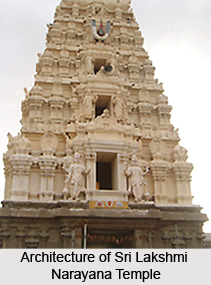
Pazhaiya Seevaram is a quaint village located approximately 20 kilometers from Kanchipuram, along the road leading to Chengalpattu. If you're traveling from Chengalpattu, the village can be reached about 5 kilometers before arriving at Walajabad.
This serene village is home to an ancient temple dedicated to Sri Lakshmi Narasimhar, nestled in a picturesque setting. The temple sits atop a small hill on the banks of the sacred Palar River. According to local belief, three rivers—Palar (also known as Ksheera Nadhi), Cheyyar (Bahu Nadhi), and Vegavathi (Saraswathi)—converge at this spot, forming what is known as the Triveni Sangamam. This confluence is considered as holy and spiritually potent as the Ganges itself.
As described in the Sthala Puranam, a sage named Vishnu Siththar once asked fellow sages at Naimisaaranyam to suggest a place where he could attain the divine vision (darshan) of Lord Vishnu through penance. In response, Sage Mareecha Muni spoke of a sacred place on Earth where intense devotion would lead to such a vision. He guided Vishnu Siththar to a hill known as Padmagiri and recounted the tale of Athri Rishi, who had earlier performed severe penance there.
It is said that Athri Rishi was blessed with the vision of Lord Vishnu in the form of Sri Lakshmi Narasimhar at this very spot. Moved by the divine encounter, the sage prayed that the Lord would remain there to bless future devotees. In answer to his prayers, Lord Narasimhar chose to stay at Padmagiri in that very form, continuing to grace and bless those who worship at this sacred site.
The architectural excellence reveals the brilliance of the artists of the contemporary period. The architectural craftsmanship is evident in the carvings on the temples and in the unusual form of the images. The main entrance to this temple is erected a tall gopura on the east side. However, the image of Lakshmi Narasimha faces west and is enshrined under the Sayana Vimana. The image of the deity is adorned with the flag-staff (dvajastambha) in front, while His consort, Ahoballavalli Thayar faces east. Apart from this the structural design of the other sub shrines no less reveals the architectural excellence of the contemporary artists.
There are many sub-shrines in the courtyard for the deities like Andal, Vishvaksena, Nammazhvar, Vishnuchitta (Periazhvar), Tiruppan Azhvar and Tirumangai Azhvar and also the Vaishnava Acharyas like amanuja and Vedanta Desika. The sacrificial hall or yaga-sala and hall of mirrors (kannadfc arai) are also found here. In a small mandapa attached to the temple near the gopura is a tiny sannidhi for Anjaneya. All the rituals here are in accordance with the Vaikhanasa Agama, which is considered very sacred by the devotees. Halfway between the foot of this hill and the temple is the large sacred tank called Atri Pushkarini. The temple can be reached by a flight of steps cut into the rock or via a road leading up to the shrine.











